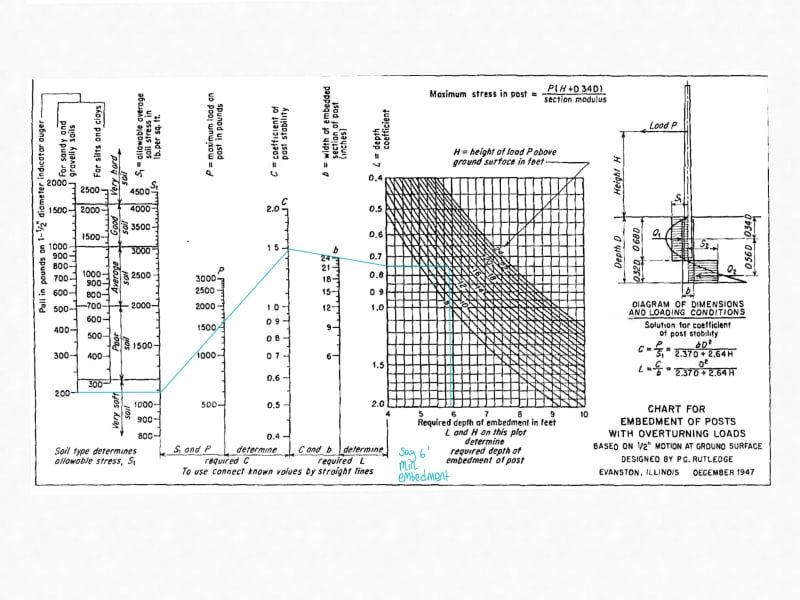psychedomination
Structural
- Jan 21, 2016
- 123
Hi there,
I'm currently working on the foundation design for a traffic light structure. I am in a hurricane-prone region; I ran the numbers for two scenarios (173 and 144 mph wind speeds). However, I have a few questions regarding the wind analysis approach and the foundation design approach. My calculations are attached :
For the wind load :
I carried out the wind analysis as per ASCE 7-10 for solid signs. Is this a suitable approach for traffic lights too?
Based on the calculations, am I being too conservative regarding the assumed area of the traffic light being hit by the wind?
For the foundations :
I was looking to use a drilled shaft foundation and for the analysis, I used the IBC 2012 eq 18-1 (I don't have geotechnical information regarding the lateral capacity of the soil, I just know that based on images of previous excavation works that it appears to be a granular sand/sandstone type material, so this method seemed ideal vs others which appeared to require input from a geotechnical report). Is this suitable or should I have used a different approach?
The final embedment depths that I am getting are very large. For a 10' tall pole I'm getting an embedment depth of ~10' for the 173mph wind speed case and ~7' for the 144mph wind speed case. Does this seem reasonable?
I tried to do a sanity check by comparing my results against the Florida DOT typical details (as I believe that they are hurricane-prone as well). However, for a similar structure, they are only specifying 3' depths and 4' depths, which has me thinking that I am doing something incorrectly. See FDOT typical detail links below :
Link
Link
Any help or guidance would be greatly appreciated!
I'm currently working on the foundation design for a traffic light structure. I am in a hurricane-prone region; I ran the numbers for two scenarios (173 and 144 mph wind speeds). However, I have a few questions regarding the wind analysis approach and the foundation design approach. My calculations are attached :
For the wind load :
I carried out the wind analysis as per ASCE 7-10 for solid signs. Is this a suitable approach for traffic lights too?
Based on the calculations, am I being too conservative regarding the assumed area of the traffic light being hit by the wind?
For the foundations :
I was looking to use a drilled shaft foundation and for the analysis, I used the IBC 2012 eq 18-1 (I don't have geotechnical information regarding the lateral capacity of the soil, I just know that based on images of previous excavation works that it appears to be a granular sand/sandstone type material, so this method seemed ideal vs others which appeared to require input from a geotechnical report). Is this suitable or should I have used a different approach?
The final embedment depths that I am getting are very large. For a 10' tall pole I'm getting an embedment depth of ~10' for the 173mph wind speed case and ~7' for the 144mph wind speed case. Does this seem reasonable?
I tried to do a sanity check by comparing my results against the Florida DOT typical details (as I believe that they are hurricane-prone as well). However, for a similar structure, they are only specifying 3' depths and 4' depths, which has me thinking that I am doing something incorrectly. See FDOT typical detail links below :
Link
Link
Any help or guidance would be greatly appreciated!

